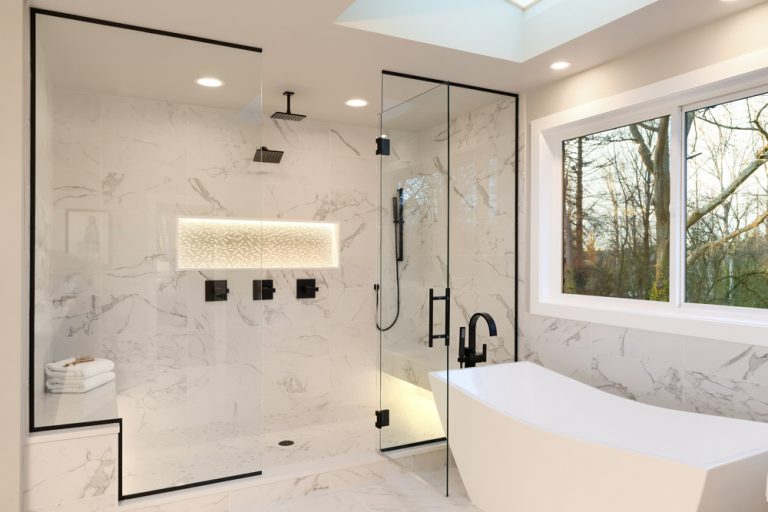How to Master the Fine Art of Pretending to Listen in Meetings
Active listening is a crucial communication skill that involves fully engaging with the speaker and demonstrating attentiveness. Nonverbal cues such as nodding and facial expressions play an important role in this process. Nodding at appropriate intervals can indicate understanding and agreement, while maintaining a pleasant facial expression shows receptiveness to the speaker’s message.
Eye contact is another essential component of active listening. Making consistent eye contact with the speaker demonstrates focus and engagement in the conversation. These nonverbal behaviors, when combined, help create a supportive environment for communication and encourage the speaker to continue sharing their thoughts and ideas.
It is important to note that genuine active listening involves more than just nonverbal cues. It requires mental focus, processing the information being shared, and responding appropriately. In professional and social settings, active listening is a valuable skill that can improve relationships, enhance understanding, and facilitate effective communication.
Key Takeaways
- Nodding and smiling can create the illusion of engagement without actually listening
- Non-committal sounds like “hmm” and “ah” can give the impression of active listening
- Mastering eye contact can make it seem like you’re paying attention even when your mind is elsewhere
- Tips for staying awake while pretending to listen to avoid the fine line between nodding and dozing
- Fake note-taking can make it appear like you’re capturing important points without actually writing anything down
The Power of the “Hmm” and “Ah”: Using Non-Committal Sounds to Give the Illusion of Active Listening

The Power of Non-Committal Sounds
In the art of pretending to listen, non-committal sounds such as “hmm” and “ah” can be incredibly powerful tools. These sounds can give the impression that you are actively engaged in the conversation, even if you are not fully present. Using these non-committal sounds at appropriate intervals can create the illusion that you are following along and processing the information being shared, even if your mind is elsewhere.
Strategic Use of Non-Committal Sounds
It’s important to use these sounds sparingly and strategically to maintain the facade of active listening without actually having to engage in the conversation. Pairing these non-committal sounds with occasional nods and smiles can further enhance the illusion of active listening. By using a combination of non-verbal cues such as nodding and smiling along with non-committal sounds, you can create the appearance of engagement without actually having to listen.
Mastering the Art of Pretending to Listen
It’s all about finding the right balance and timing to make these non-committal sounds seem natural and genuine. Mastering the art of using non-committal sounds can be a valuable skill in situations where you need to appear engaged without actually listening, whether it’s in a professional setting or social interaction.
Mastering the Art of Eye Contact: How to Make it Seem Like You’re Paying Attention When Your Mind is Elsewhere

Maintaining eye contact is a crucial aspect of pretending to listen effectively. Even if your mind is wandering, making consistent eye contact with the speaker can create the impression that you are fully engaged in the conversation. It’s important to strike a balance between maintaining eye contact and not staring too intently, as this can come across as unnatural and insincere.
By making regular, brief eye contact with the speaker, you can convey the appearance of active listening, even if you are mentally checked out. Another key aspect of mastering the art of eye contact is using it in conjunction with other non-verbal cues such as nodding and smiling. By pairing eye contact with nods and smiles, you can create a seamless illusion of engagement without actually having to listen.
This combination of non-verbal cues can make it seem like you are fully present in the conversation, even if your mind is elsewhere. Mastering the art of eye contact can be a valuable skill in situations where you need to appear engaged without actually listening, whether it’s in a professional setting or social interaction.
The Fine Line Between Nodding and Dozing: Tips for Staying Awake While Pretending to Listen
When pretending to listen, it’s important to walk the fine line between nodding and dozing off. Nodding off during a conversation can quickly give away the fact that you are not actually listening. To avoid this, it’s important to stay alert and engaged, even if your mind is elsewhere.
One way to stay awake while pretending to listen is to maintain good posture and avoid slouching or leaning back, as this can make it easier to drift off. Sitting up straight and maintaining an attentive posture can help you stay alert and avoid giving away the fact that you are not actively engaged in the conversation. Another tip for staying awake while pretending to listen is to take occasional sips of water or shift your position subtly.
These small movements can help keep you alert and prevent you from nodding off during a conversation. It’s also important to take deep breaths and focus on staying present in the moment, even if your mind is wandering. By staying physically and mentally alert, you can effectively maintain the illusion of active listening without actually having to engage in the conversation.
The Art of the Fake Note-Taking: How to Look Like You’re Capturing Important Points Without Actually Writing Anything Down
In situations where active listening is expected, the art of fake note-taking can be a valuable skill to master. By appearing to take notes, you can create the impression that you are actively engaged in the conversation, even if you are not actually listening. One way to effectively fake note-taking is to maintain a pen and notepad in front of you and occasionally jot down a few random words or doodles.
This can give the appearance that you are capturing important points, even if you are not actively processing the information being shared. Another key aspect of fake note-taking is using it in conjunction with other non-verbal cues such as nods and smiles. By pairing fake note-taking with nods and smiles, you can create a seamless illusion of engagement without actually having to listen.
It’s all about finding the right balance between appearing to take notes and not actually writing anything down. Mastering the art of fake note-taking can be a valuable skill in situations where you need to appear engaged without actually listening, whether it’s in a professional setting or social interaction.
Navigating the Minefield of Interruptions: How to Seamlessly Transition from Pretending to Listen to Speaking Without Missing a Beat
Using Non-Committal Sounds
In situations where you need to pretend to listen, navigating interruptions can be a challenging task. However, mastering the art of seamlessly transitioning from pretending to listen to speaking can help you maintain the illusion of engagement without missing a beat. One way to do this is to use non-committal sounds such as “hmm” or “ah” to acknowledge the interruption while maintaining the appearance of active listening.
Redirecting the Conversation
By using these non-committal sounds, you can create a seamless transition from pretending to listen to speaking without giving away the fact that you were not fully engaged in the conversation. Another key aspect of navigating interruptions is using them as an opportunity to redirect the conversation back to yourself. By subtly steering the conversation towards your own thoughts or experiences, you can effectively transition from pretending to listen to speaking without missing a beat.
Maintaining the Illusion of Engagement
It’s all about finding subtle ways to interject your own thoughts while maintaining the illusion of engagement. Mastering the art of navigating interruptions can be a valuable skill in situations where you need to appear engaged without actually listening, whether it’s in a professional setting or social interaction.
The Art of the Subtle Exit: How to Make a Graceful Escape When You’ve Mastered the Art of Pretending to Listen enough to not get caught
After successfully pretending to listen, making a graceful exit can be a crucial final step in maintaining the illusion of engagement without getting caught. One way to do this is by expressing appreciation for the conversation and subtly excusing yourself by mentioning another commitment or engagement. By gracefully acknowledging the conversation and politely excusing yourself, you can make a smooth exit without giving away the fact that you were not actively engaged in the discussion.
Another key aspect of making a subtle exit is using non-verbal cues such as nods and smiles while expressing your gratitude for the conversation. By pairing these non-verbal cues with a polite exit, you can create a seamless transition from pretending to listen to gracefully exiting without getting caught. It’s all about finding subtle ways to express your appreciation for the conversation while making a smooth exit.
Mastering the art of the subtle exit can be a valuable skill in situations where you need to appear engaged without actually listening, whether it’s in a professional setting or social interaction. In conclusion, mastering the art of pretending to listen requires a combination of non-verbal cues, strategic use of non-committal sounds, and subtle techniques for staying awake and engaged. By honing these skills, you can effectively maintain the illusion of active listening without actually having to engage in the conversation.
Whether it’s in a professional setting or social interaction, these techniques can be valuable tools for navigating situations where active listening is expected but not necessarily required.
FAQs
What is the fine art of pretending to listen in meetings?
The fine art of pretending to listen in meetings refers to the skill of appearing engaged and attentive during a meeting while actually not fully focusing on the discussion.
Why is pretending to listen in meetings important?
Pretending to listen in meetings can be important in maintaining a professional demeanor and avoiding potential conflicts or misunderstandings with colleagues or superiors.
What are some techniques for pretending to listen in meetings?
Some techniques for pretending to listen in meetings include maintaining eye contact, nodding at appropriate times, asking relevant questions, and providing occasional verbal affirmations.
What are the potential drawbacks of pretending to listen in meetings?
The potential drawbacks of pretending to listen in meetings include missing important information, appearing disengaged or uninterested, and potentially damaging professional relationships.
How can one improve their listening skills in meetings without pretending?
Improving listening skills in meetings can be achieved by actively engaging in the discussion, practicing active listening techniques, and minimizing distractions to fully focus on the conversation.






